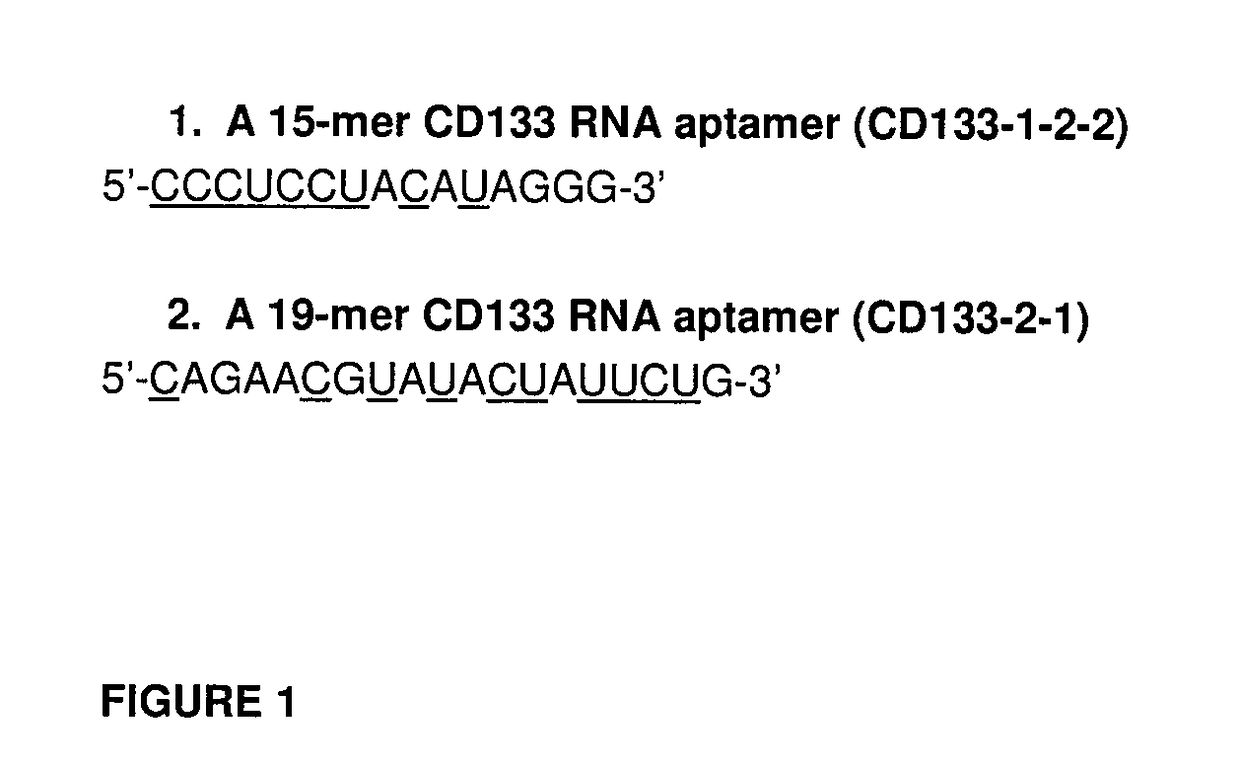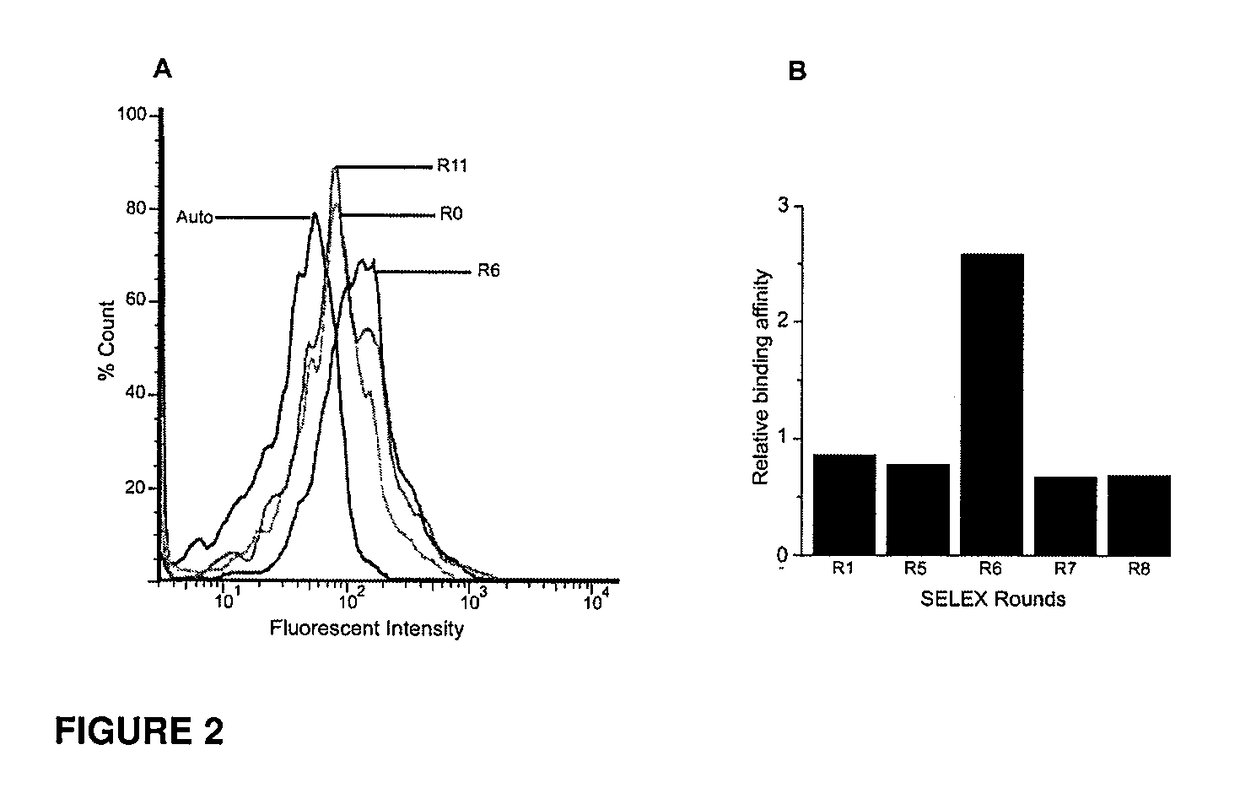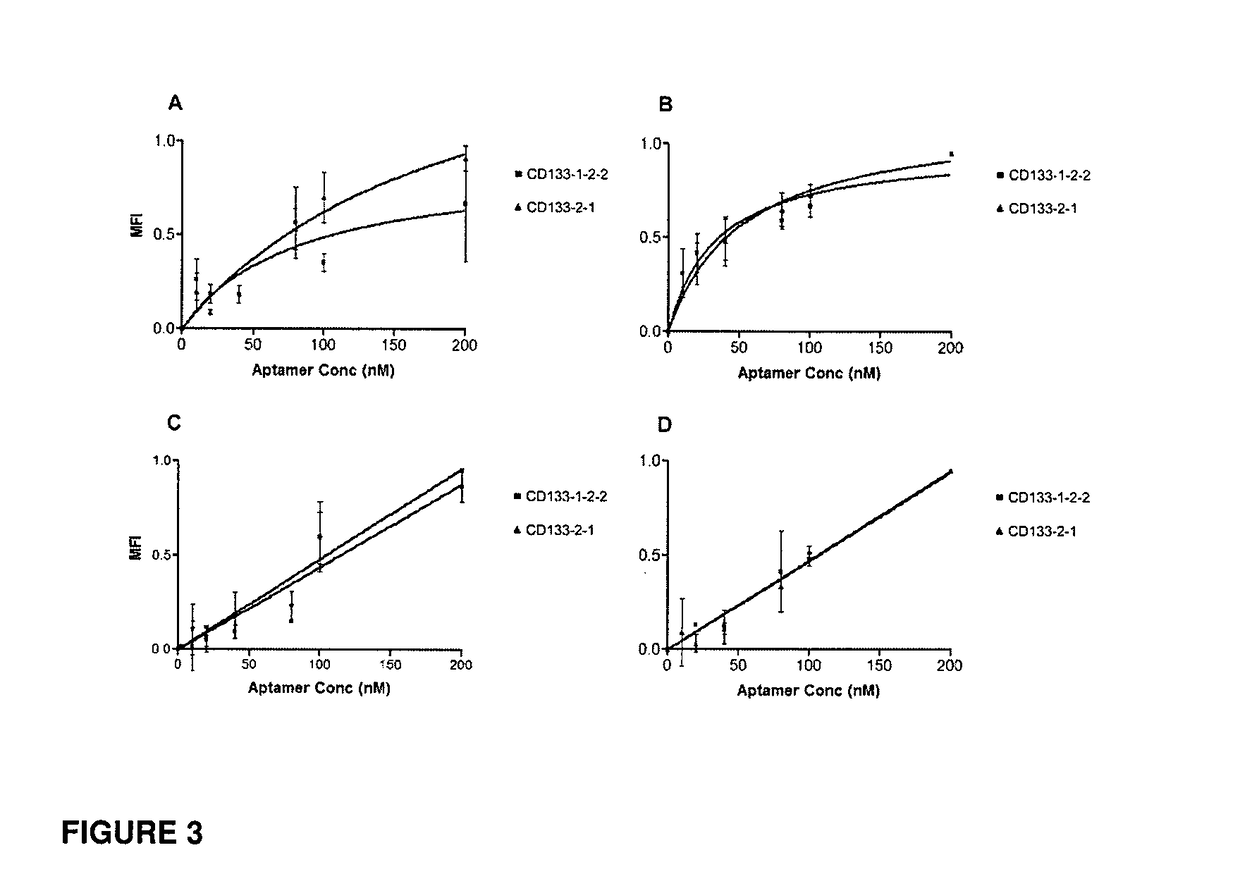CD133 aptamers for detection of cancer stem cells
a technology of cd133 and stem cells, applied in the field of rna aptamers, can solve the problems of lack of sensitivity and conventional antibody-based detection and targeting of cd133-positive cancer stem cells, and achieve the effect of facilitating detection and imaging
- Summary
- Abstract
- Description
- Claims
- Application Information
AI Technical Summary
Benefits of technology
Problems solved by technology
Method used
Image
Examples
example 1
X Facilitates the Selection of Aptamers Against Complex Protein Targets
[0181]CD133 is a complex pentaspan protein containing two extracellular loops. To effectively select aptamers against only the extracellular portion of the protein, it was necessary to devise a procedure that allowed the inventors to express CD133 in its native conformational form. To this end, the inventors sought to transiently express the protein on the surface of HEK293T cells. Using Lipofectamine 2000, CD133 was transfected into HEK293T cells and allowed to express for 72 hours prior to SELEX experiments, with expression confirmed by AC133 antibody staining. Similar to previous SELEX experiments, a random RNA library of approximately 1×1014 species containing 2′fluoro-modified ribose on all pyrimidines was incubated with expressed CD133 on the surface of HEK293T cells. Unbound RNA was removed via several washing steps prior to RT-PCR, and the process was repeated for a total of 12 rounds. Non-specific bindin...
example 2
X Engineering Generated the Smallest Tumour-Specific Aptamer
[0182]Round six was cloned and sequenced and the clones were fluorescently tagged with FITC using an in-house method. The binding specificity of each clone was determined using transfected and non-transfected HEK293T cells and the most encouraging results were shown with two aptamers, designated CD133-1 and CD133-2. These two clones were sequentially truncated to determine the shortest number of bases required to maintain the structure of the binding region of the aptamer, as well as reducing the Kd and therefore, increasing the binding affinity (Table 1).
[0183]
TABLE 1Sequences of CD133 aptamers and their truncations.Length(number ofSequencenucleotides)CD133-1GAG ACA AGA AUA AAC GCU CAA CCC ACC CUC81CUA CAU AGG GAG GAA CGA GUU ACU AUA GAGCUU CGA CAG GAG GCU CAC AACCD133-1-1GAG ACA AGA AUA AAC GCU CAA CCC ACC CTC58CUA CAU AGG GAG GAA CGA GUU ACU AUA GCD133-1-2GCU CAA CCC ACC CUC CUA CAU AGG GAG GAA35CGA GUCD133-1-2-1CC ACC C...
example 3
cific Aptamers are Internalised Via Receptor-Mediated Endocytosis
[0187]As we have previously reported, for an aptamer to be classed as an effective cancer theragnostic, it must be efficiently internalised following binding to its target. Following incubation with both CD133 positive and CD133 negative cells at 37° C. for 30 minutes, internalisation was quantified using confocal microscopy (FIG. 5). Internalisation was considered specific due to the lack of fluorescent signal seen with CD133-negative cell lines. Internalisation via receptor-mediated endocytosis was confirmed via endocytic blockade, such as potassium-depletion and hypertonic treatments. The effectiveness of these treatments has been previously confirmed using transferrin (Shigdar et al. (2011a) Cancer Sci 102:991-8) and as shown in FIG. 6.
PUM
| Property | Measurement | Unit |
|---|---|---|
| dissociation constant | aaaaa | aaaaa |
| dissociation constant | aaaaa | aaaaa |
| dissociation constant | aaaaa | aaaaa |
Abstract
Description
Claims
Application Information
 Login to View More
Login to View More - R&D
- Intellectual Property
- Life Sciences
- Materials
- Tech Scout
- Unparalleled Data Quality
- Higher Quality Content
- 60% Fewer Hallucinations
Browse by: Latest US Patents, China's latest patents, Technical Efficacy Thesaurus, Application Domain, Technology Topic, Popular Technical Reports.
© 2025 PatSnap. All rights reserved.Legal|Privacy policy|Modern Slavery Act Transparency Statement|Sitemap|About US| Contact US: help@patsnap.com



